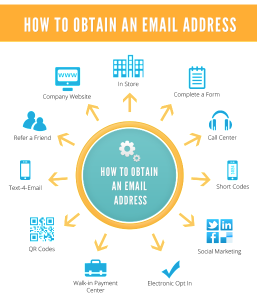— July 13, 2017

geralt / Pixabay
As goods move from manufacturer to wholesaler to retailer to consumer, each party has its own interests. For the businesses in that chain, those interests are often centered on core company goals like increased sales or profitability. Channel partner managers seek to influence wholesalers and retailers to get more leads and sales.
Studies have revealed that alliances among businesses increased over the past decade, with partner distribution worth up to one-third of many companies’ revenue. Still, a channel program relationship has a remarkable failure rate—some estimates put it as high as 70 percent.
How to improve the management of these vital programs warrants a closer look.
What Is Channel Marketing?
Channel marketing builds partnerships with companies outside an organization to help increase the distribution and sales of a product or service. Each channel represents a link in the chain between the original manufacturer and the end consumer.
A common example is a supermarket that has aisles full of products it does not produce. While some may think of a cereal producer as the first link in the chain, the link extends further back to the farmers who grow the wheat or corn used to produce the cereal. That elongated chain reveals the potential scope of channel marketing efforts.
Channel programs developed over time because businesses face limitations in distributing a product or service from a single location. It’s not hard to imagine the potential increase in sales if a local health-food manufacturer were suddenly to feature on the homepage of Amazon.
Historically, the businesses with the resources to invest in channel marketing have been large organizations with sophisticated marketing departments. However, the growth of online shopping on sites like Amazon, eBay, or Etsy has provided single-person entities access to powerful channel partners with minimal maintenance of relationships within that channel.
Despite this expansion of the market, traditional channel program management remains key for many large organizations that depend on sales across a wide geographic area. Because channel marketing programs typically seek to influence other businesses between the manufacturer and consumer, the work often falls within the ambit of the business-to-business (B2B) marketing. Channel marketing may, of course, also advertise directly to consumers.
Types of Channel Marketing Programs
What does a B2B partner marketing program look like? The answer varies based on the business as well as short- and long-term marketing goals.
Typically, an organization hires a manager or team to identify new partners, negotiate channel marketing agreements, nurture relationships, and report on the value of channel partnerships. Due to the multi-tiered structure of a robust partner program, channel marketing tends to be resource intensive.
To minimize the burden of running a program, some businesses take advantage of Partner Relationship Management (PRM) software, which offers a similar set of benefits as Customer Relationship Management (CRM) software. Others outsource partner program management when in-house operations are not feasible.
Channel partner relationships operate in several ways. In each, the original producer usually shares a percentage of the revenue as compensation for a partner’s role in generating sales. Channel partners may also receive other rewards, like the exclusive rights to sell products or services.
These are the various relationships producers may build with their channel partners:
To-partner marketing. This effort helps persuade a partner that the relationship is valuable. It answers the “What’s in it for me?” question that a partner may ask. This marketing strategy does not necessarily affect end-of-line consumers. Instead, it treats the channel partner as the consumer of marketing materials.
With-partner marketing. This subcategory of a partner program identifies joint-marketing initiatives. Often, a prominent company may lend its brand to help increase sales for the partner. For example, a Dell television advertisement may highlight the use of Intel processors to persuade buyers to buy a computer from a company that uses a trusted processor manufacturer. With-partner marketing may also include a producer sponsorship of a local event, although these engagements may be limited by cost and reserved for top-tier partners.
Through-partner marketing. This tactic seeks to make it easier for partners to sell a vendor’s product. It may include training to help prepare a partner to sell a new product or generate marketing materials that highlight the benefits of a consumer using the vendor’s service. For example, a through-partner marketing effort by an electronics manufacturer may help train big-box sales staff to convey the benefits of a new line of LED televisions. Strong through-partner marketing efforts highlight shared benefits, like the ability of the latest smartphone to take advantage of a service partner’s upgraded network.
For-partner marketing. This final type of partner marketing bypasses the producer’s partners and markets a product or service directly to consumers—even when the partner makes the actual sale. A common example is a national advertisement campaign by an automobile manufacturer on behalf of its independently owned dealerships. The lack of required collaboration makes for-partner marketing a popular choice among vendors, who retain greater control over the marketing message.
Strategies for Channel Partner Program Management
With a basic understanding of channel partner programs, a manager can begin to create or improve partner relationships for a business. These strategies reflect the proven strategies that help guide successful partner relationships:
Identify the right partner. Without the right partner, managing a relationship may be a continual and unprofitable drain on internal resources. What makes a good partner? A key factor is a clear benefit for both sides. It’s useful to keep in mind that an ideal partner may operate at a different scale. A small vendor may take advantage of a national partner’s wide distribution network; a large vendor may build new markets through local retailers. Consider, for example, the diverse businesses that all identified a potential benefit in producing The LEGO Batman Movie. In the end, the critical shared quality is a business goal, not a business type.
Streamline the acquisition process. In a channel partner program, both sides are interested in learning whether a partnership will prove valuable as quickly as possible. A tedious onboarding process may stretch the time between a signed contract and mutual profitability. That delay can impair the development of a relationship and even end the partnership prematurely. Similarly, a failure to educate partners quickly may slow the growth of the relationship.
Build a strong relationship. A shared business goal may be a requisite for a strong relationship, but it takes continual effort to maintain and improve that relationship. Framed in the traditional marketing terms of “awareness” and “engagement,” partner relationship building may include regular contact to assess performance and identify needs. It may also rely on the consistent production and distribution of supporting marketing materials, one of the several reasons some companies employ PRM software that helps automate the process. Partners are likely to be more motivated to sell a product when it’s consistently top-of-mind and has clear selling points.
Create relevant targets for measurement. The measurement of a partner relationship is essential for businesses that want to identify the most valuable marketing partners. Just as a business-to-consumer marketing department works to develop a buyer persona, a channel partner manager should choose metrics that help identify the most valuable marketing partners. Common metrics may relate to revenue or sales, but others may also include scoring systems related to partner development. For example, a manager may use PRM data to identify which partners engage with vendor marketing materials most often or complete online training courses quickly.
Moving Forward
Successful partner marketing programs can increase the visibility of a brand, its ability to access new markets, and its overall sales. Such positive gains, however, require an understanding of the nuances of partner marketing programs, such as whether a vendor should invest more money in marketing to partners or directly to consumers.
Many of the strategies that lead to successful partner relationships rely on the same business principles that help companies market to consumers, like building strong relationships and setting clear targets that define business success.
Beyond these tested strategies, some experts encourage vendors to focus even more on the vendor–partner relationship. Those advanced tactics suggest rethinking historical challenges. For example, rather than focusing on eliminating business differences, exploring how those differences may allow the partners to increase the value of their offering.
Still, the underlying goal remains consistent: increasing collaboration between businesses to offer a better product to consumers and a greater business opportunity to all involved.
Business & Finance Articles on Business 2 Community
(64)
Report Post





